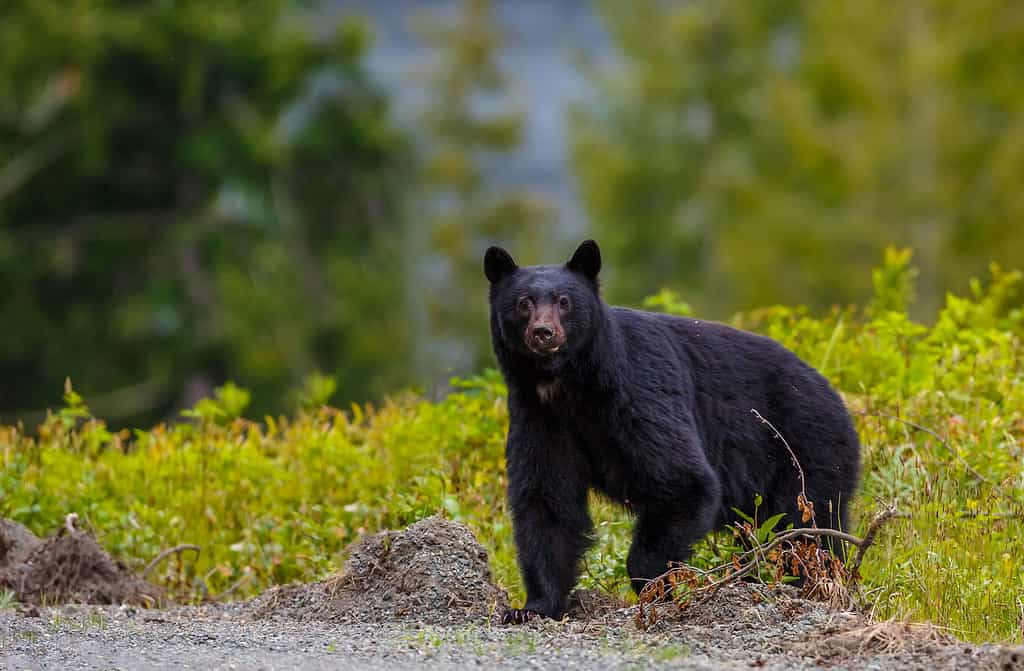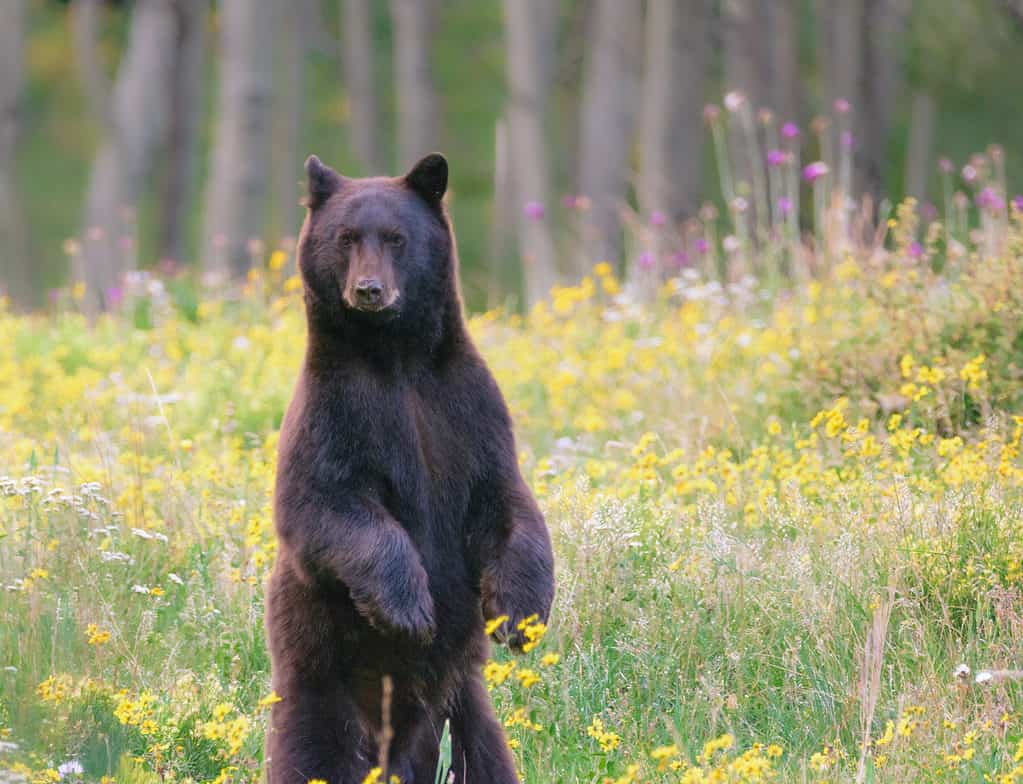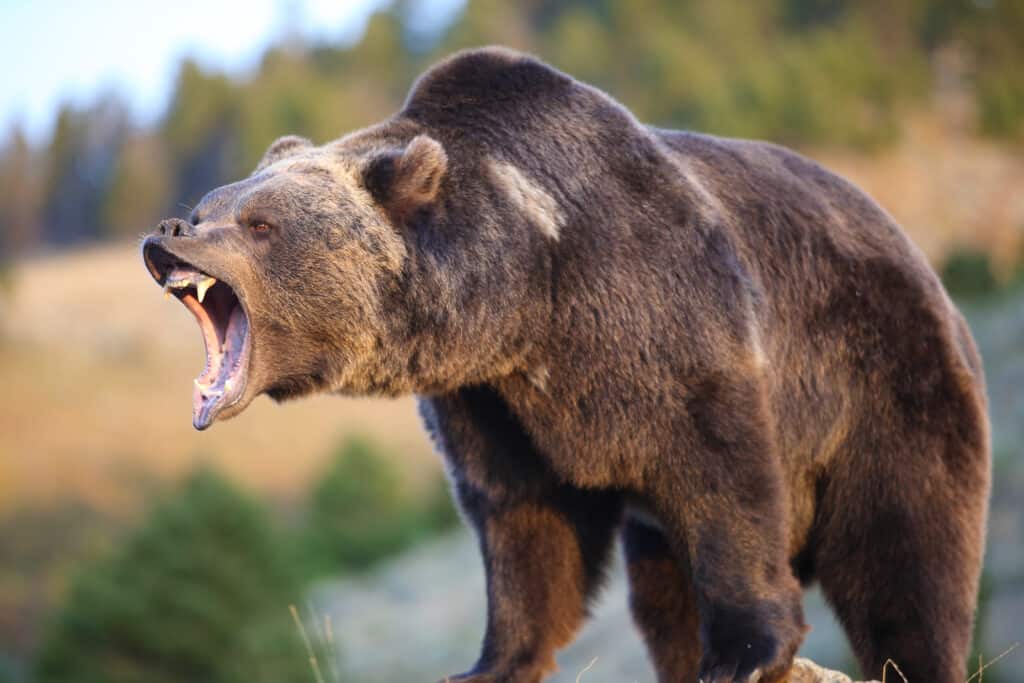Any hiker’s worst fear in bear country is an awe-inspiring encounter that becomes a terrifying attack. Now imagine the shock if this happened in your backyard. A boy in New York was attacked by a black bear in his yard in New York. This article will discuss the details of the incident, the behavioral factors that may have played a role, and other information on bear attacks.

The
North American black bear
is typically not an aggressive species.
©Menno Schaefer/Shutterstock.com
A 7-year-old boy had a terrifying encounter with a black bear on August 22nd, 2023, in Hudson Valley, New York. The bear attack occurred in the family’s backyard where the animal grabbed the boy. Thankfully, the victim’s injuries were not life-threatening and his mom, a doctor, was able to administer first aid. When the police and EMS arrived, the bear was still in the backyard and behaving abnormally. Because of the threat to first responders and other residents, police shot and killed the bear.
Sightings and human interactions with bears are increasing in the county where the attack occurred. The number of sightings and interactions with bears in Westchester County are up from 9 in 2017, to 40 in 2022. Black bears, however, are not normally aggressive and rarely attack people. Various factors can insight atypical violent behavior, such as rabies infection, feeling threatened, or hyperphagia, the period before hibernation when bears gain excessive weight. The bear killed following the Hudson Valley incident did not have rabies.
Bear Behavior
Black bears generally have a shy and non-confrontational nature, but there are instances of deviation from their usual demeanor. Atypical aggressive behavior in black bears, like other animals, can arise due to a combination of factors. Such factors can be environmental and biological.

Most interactions with black bears are sightings and defensive posturing.
©Constance Mahoney/Shutterstock.com
One factor that can contribute to atypical aggression is a bear’s health condition. Rabies, a viral infection that affects the central nervous system, can cause a significant alteration in behavior, leading to aggression. Rabies-infected black bears might exhibit symptoms such as disorientation, restlessness, and unprovoked aggression. This is due to the virus’s impact on the brain, which can lead to severe behavioral changes. It’s important to note that while rabies is a potential cause of atypical aggression, it is not the cause in every case. Other health issues, injuries, or even cubs being present can also influence a bear’s behavior.
Additionally, environmental factors such as food scarcity or competition for resources can lead to stress and trigger aggressive behaviors in black bears. Human activities, like improper food disposal or feeding bears, can also distort their natural behavior, potentially causing them to become bolder or more aggressive in search of food.
Bear Attacks

Brown bears are more aggressive than black bears.
©Dennis W Donohue/Shutterstock.com
Bear attacks are rare but significant events that draw attention due to their potential danger. In North America, black bear attacks on humans are relatively infrequent. While black bears are generally timid and likely to avoid human contact, they can become aggressive. Brown bears, on the other hand, are more aggressive. They can exhibit a higher level of territoriality and might perceive humans as potential threats to their territory or cubs, leading to more frequent and severe attacks. It’s important to note, however, that most encounters between bears and humans result in non-aggressive behavior from the bears, with the animals either fleeing or displaying defensive postures. Understanding bear behavior, being knowledgeable about bear habitats, and practicing appropriate safety measures can significantly reduce the risk of bear encounters escalating into attacks.
The photo featured at the top of this post is © Ghost Bear/Shutterstock.com
Thank you for reading! Have some feedback for us? Contact the AZ Animals editorial team.







